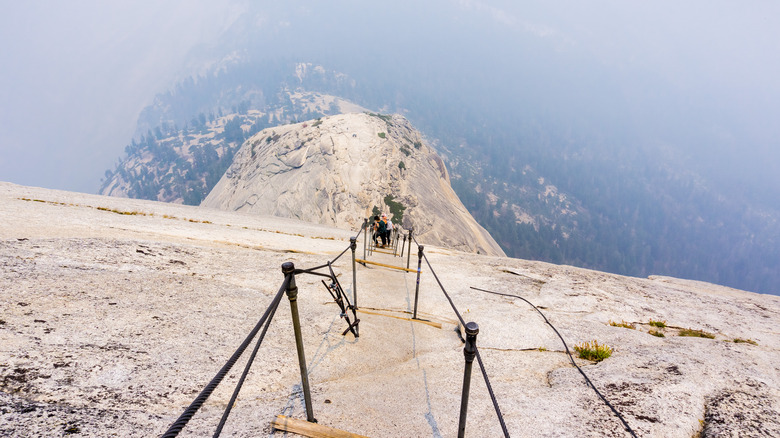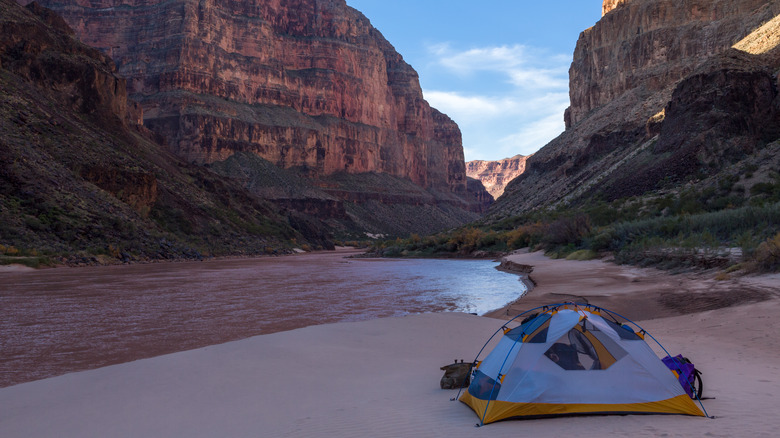What Are Hiking Permits And When Do You Need One?
As more Americans head out to hiking trails to enjoy nature in their free time, hikes around the U.S. from those in small local forests to big national parks have gotten more popular. While it's great that more people are taking advantage of the beauty of the outdoors, nobody likes a crowded trail. This is where hiking permits come in — because crowded trails are more than just a small annoyance. In fact, crowded trails not only lessen the enjoyment of visitors but can also have negative effects on the environment and can even create dangerous conditions on difficult trails.
So, to prevent environmental damage and to ensure that all hikers can have an enjoyable and safe experience, many parks on state and federal land across the United States have started requiring hiking permits. A hiking permit is a piece of paper that says you are allowed to hike a specific trail on a specific day. These permits help control the number of people who have access to certain trails and often require a person to register online and pay a fee to obtain it. This system, while taking away some of the spontaneity of hiking, helps park management better serve and protect hikers, maintain trails and facilities, educate visitors, and protect local wildlife.
What types of trails need hiking permits?
A general rule for hiking permits is that if you are visiting a small local or state trail, you likely won't need a permit or hiking reservation. However, if you are visiting an extremely popular hiking area in a large national or state park, or if the trail you are taking is rather long or difficult, it's a good idea to do some research and see if you need a hiking permit to enter. Some of the most popular hikes in the U.S. — such as Half Dome, the Teton Crest Trail, Mount Whitney, the John Muir Trail, the Wave in Arizona, Angel's Landing in Zion National Park, and the Pacific Crest Trail — require prior reservations and hiking permits.
However, even if a specific trial doesn't require a hiking permit, many popular multi-day treks will require a backcountry permit. A backcountry permit is necessary if you want to camp on most federally controlled land and helps limit the number of people in the park's campsites and on backpacking trails. The Grand Canyon's famous Bright Angel Trail is a good example of a hike that doesn't technically require a hiking permit but does require a backcountry permit to camp at the bottom of the canyon — the halfway point for most hikers. The same goes for Mount Rainier, Havasu Falls in Arizona, and much of the Appalachian Trail.
How to get a hiking permit
It's important to know that applying for a hiking permit is different from applying for a time slot to enter a national park — and for many trails you will need to apply and pay for both park entrance and a hiking or backcountry permit. Any reservations or permits for national parks and other federally controlled land can be applied for on the official recreation.gov website.
It's a good idea to research your specific hike and learn when the best time to apply for a hiking or backcountry permit is because it can vary drastically for different trails, even within the same park. While some popular hikes only require you to apply for a permit the day before (like Angel's Landing in Zion), others require you to apply months before your trip (like the backcountry permit for the Grand Canyon). On top of that, some of the most popular hikes, and especially those on the West Coast like Mount Whitney and Half Dome, work on a lottery system that requires hikers to have planned out their entire trip and know all the details before entering their name into the drawing during a fixed entrance period (usually starting in January or February).


